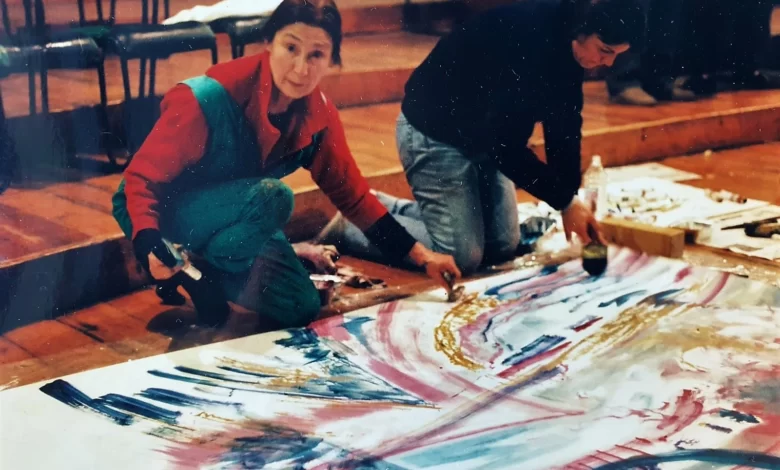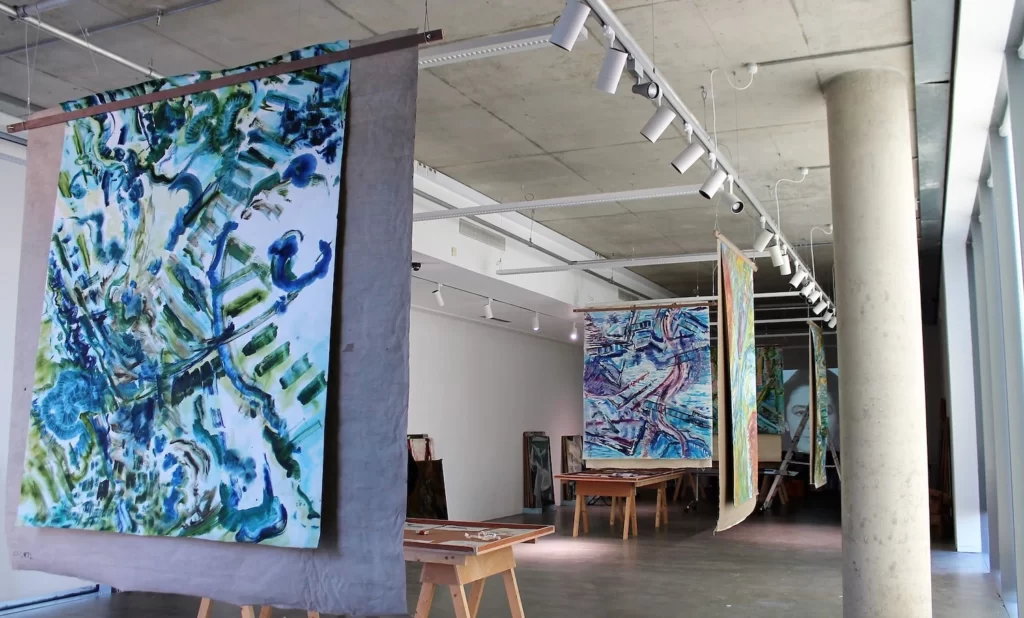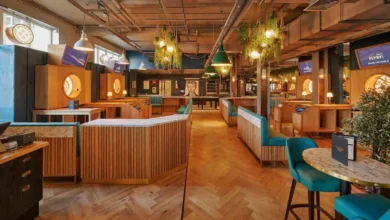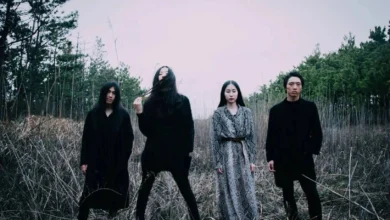
‘The Wrong Sex’: Exhibition For ‘Forgotten’ Liverpool Artist
A major exhibition of a forgotten female artist opening this month in Liverpool marks the start of a reappraisal of her work which was largely disregarded because she was “the wrong sex”.
While the world is very familiar with many of her male contemporaries like Jackson Pollock, Mark Rothko or Willem de Kooning, Fanchon Fröhlich, an American-born Liverpool artist has been long underappreciated because – she was a woman.
The exhibition, The Wrong Sex, a world premiere at Liverpool John Moore’s University (LJMU), is the first display of the archive of the artist Fanchon Fröhlich (1927-2016) anywhere in the world and investigates the breadth and depth of her astonishing output.
In addition the University of Liverpool will also be hosting their own fascinating retrospective of Fröhlich’s work alongside many of her contemporaries, from October until March 2024.
A prolific abstract expressionist painter, printmaker and draughtsperson throughout her life, Fröhlich’s practice crossed over into a number of other disciplines including philosophy and theoretical physics.
At Fröhlich’sdeath, the British Art and Design Association (BADA) was bequeathed a unique and substantial collection of art and important biographical documents that make up the ‘oeuvre’ and social narrative of her life – artworks, letters, journals, and papers.
“Fanchon exhibited alongside Joan Miró in the 1960s but was largely overlooked, not because of her art but purely because she was deemed to be ‘the wrong sex’ for an abstract expressionist painter of the time,” said Dr James Schofield, Programme Leader MA Exhibition Studies at Liverpool School of Art and Design (LJMU).

With colleagues from BADA, Dr Schofield and his team are setting the record straight for the adopted Scouser with an exhibition of Fröhlich’s work in the John Lennon Building from February 17 to May 4.
Dr Schofield said: “We directly address this prejudiced assumption to platforming Fanchon, her practice and her life. The aim is to open out her legacy to new audiences and show the impact she had across artistic, scientific and philosophical spheres.”
Fanchon Fröhlich (née Angst) was born in Iowa, USA in 1927, and lived in Liverpool from 1949 until her death in 2016. Her alma maters include the University of Chicago, where she studied the Philosophy of Science, Oxford University, studying Linguistics Philosophy and LJMU ‘origin college’ the Liverpool College of Art, where she studied Fine Art.
She travelled globally exploring new techniques and approaches to practice developing many collaborations with eminent post-war artists and printmakers including Peter Lanyon, William Hayter and calligraphic artist Goto San in Kyoto.
It was during her time at Paris’s renowned Atelier 17 that her work was most prominent, leading to her writing for the internationally renowned Situationist International in 1961, and later exhibiting her prints alongside luminaries such as Marcel Duchamp and Joan Miró.
However, she was largely overlooked in the canon of art history, not for reasons relating to her technical creative ability, but purely because she was deemed to be ‘the wrong sex’ for an abstract expressionist painter of the time.
Throughout the 1950s, 60s, and 70s, Fanchon and her husband, the eminent scientist Herbert Fröhlich, emeritus professor and Chair for Theoretical Physics at the University of Liverpool were at the heart of Liverpool’s own ‘Bloomsbury Group’ playing host to such luminaries Erwin Schrödinger, Richard Feynman, John Cage and Beryl Bainbridge amongst many others.

Internationally established artist Terry Duffy, chair of BADA and who was a friend of the artist from 1992, said: “Fanchon Fröhlich left an incredible body of work which demands to be appreciated and for her amazing talent to be recognised in the same way that equivalent males artist have been.
“She told me that she was once dismissed for being “the wrong sex”, and like many female artists and scientists of that time, and earlier, Fanchon was in the shadows of her male counterparts. But for those prevailing attitudes she would not have been sidelined nor disregarded but famous and highly influential.
“The time has come for us to look at her work again and The Wrong Sex directly addresses this prejudiced assumption to platform her practice and her life by opening out her legacy to new audiences and disseminating the impact she had across artistic, scientific and philosophical spheres and provide a starting point for future research, response and collaboration for practitioners and BADA.”
Much like the artist and her own way of working, the display will be dynamic and changing throughout the lifespan of the exhibition, in order to provide as much insight into the archive as possible.
Incorporating original storage items from the archive into the curation of the exhibition, many of the previously unseen items will be articulated in new, non-chronological, relations with one another to provide a fluid dialogue that encourages further interaction and study.
The Wrong Sex: Franchon Fröhlich will show at the Exhibition Research Lab, John Lennon Art and Design Building, Duckinfield Street, L3 5RD. The gallery is open Monday – Friday, 11:00am – 4:00pm, and will be closed on industrial action strike days and during university holidays.
A full listing of the archive can be found digitally here. (www.badaart.org)







